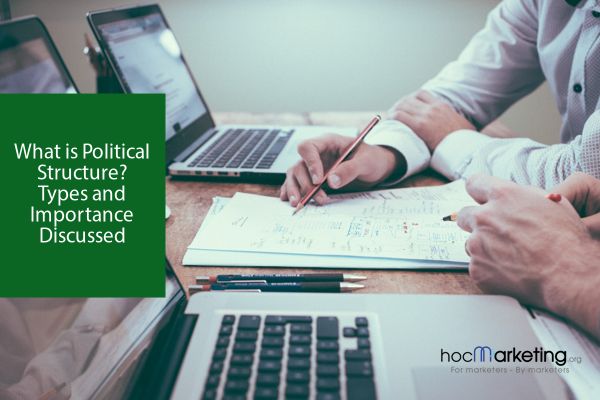
What is Political Structure? Types and Importance Discussed

A political organization engages in political activities to achieve its goals It includes political parties, labor unions, coalitions, NGOs, and advocacy groups Benefits and disadvantages exist
What is a political organization?
A political organization is a group of individuals who come together to achieve common political goals through various activities and processes. These goals may be pre-defined and aim to benefit the interests of the organization's members.Various entities fall under the umbrella of political organization, such as political parties, social movements, civil society organizations, advocacy groups, and non-governmental organizations. These groups participate in a range of political activities, including campaign advertisement, community organizing, and lobbying. As a formal entity, political organization may involve extensive bureaucracy and frequent meetings, but its core values center around mobilizing, supporting, and motivating individuals to achieve the organization's goals.
Political organizations can vary in their structure, ranging from loose arrangements to tightly organized groups depending on their objectives. Some may have an open membership while others may be closed, and their involvement in parliamentary politics can also differ. Essentially, a political organization is a formal group of individuals who unite to pursue or wield power in public or government affairs. The success of such groups relies heavily on effective group dynamics and skilled facilitation. These organizations are typically self-governed and operate on a voluntary basis.
Political organizations face both commonalities and challenges. One such challenge is the task of engaging citizens and advocating for their needs. Ultimately, these organizations strive to influence public opinion and policy, whether through direct or indirect means.
Types of political organization
The numerous types of political organizations are described below
1. Political parties
A political party is one of the most common and popular types of political organization. It is an organized group whose members have a similar ideology and political positions.
In order to achieve their goals, political parties field candidates for elections who are expected to win and enact their party's agenda. The leadership of a political party is typically elected by its members and includes a prominent figure who can effectively lead and represent the party. Along with the party leader, other crucial members of the organization include the party secretary, who records the minutes of party meetings, the party treasurer, who manages finances and membership dues, and the party chair, who strategizes ways to maintain and grow the party's membership base.
There are other vital positions in the political party that work towards making it more powerful and strong.
Some of the common types of political parties are
9. In a democratic multi-party system, political parties compete with each other to gain power through free and fair elections.
are not the norm in these countries, as the political landscape is much more diverse and varied. This allows for a wider range of voices and perspectives to be heard and represented in the political sphere, providing a more comprehensive and democratic approach to governance. Citizens are also empowered to take an active role in shaping the political agenda, rather than being limited to choosing between two dominant parties.
In several countries, including the United States, the United Kingdom, Nepal, and Australia, the two-party system is a common type of political organization. These systems operate similarly to democratic multi-party systems, with a party leader serving as the representative. However, individuals who wish to join or affiliate with a party in a two-party system have only two options to choose from, rather than several parties. In such countries, both parties compete in general elections to retain power.
The one who gains the majority of the votes wins the election and forms his/her government.
3. One-party dictatorship
Under the one-party system, the people are stripped of their democratic rights and freedoms as the ruling political organization holds all the power. This type of political organization is prevalent in various countries including Vietnam, North Korea, Cuba, and China, where the government sets up rules and regulations as per their agenda, without giving the common masses any say in the matter.
2. Labour Unions
Trade unions, also known as labour unions, are a prevalent form of political organization that aims to safeguard and advance the rights and interests of the workforce in factories and organizations.
The labor union plays a crucial role in representing workers by negotiating with employers and management to secure fair salaries, protection against unjust dismissal, and severance pay. Additionally, they have the power to organize general strikes when necessary. Unlike political parties, labor unions do not participate in direct elections, but rather advocate for parties and politicians who support their cause.
3. Party coalitions
In a democratic country, it is not uncommon for political parties to form a coalition in order to gain more power in the parliament. This coalition is known as a party-coalition and involves two or more political parties working together towards a common goal.
Sometimes, parties may agree to form a coalition before the election in order to increase their chances of winning and to have a clearer mandate from the voters. This pre-election coalition building can also help to avoid post-election negotiations and uncertainties.
A coalition formed before the elections is considered a legitimate agreement among parties to either run together or separately with the aid of certain seating arrangements. The primary purpose of establishing a party coalition is to accomplish a shared agenda.
4. Non-governmental organization
NGOs are political organizations that operate independently of government influence and work on various levels, such as international, national, regional, and local. They are created by citizens and typically consist of associations and clubs that provide services to members and others. These non-profit organizations are involved in a range of endeavors, including social science research and humanitarian work.
Non-governmental organizations are instrumental in a wide range of activities such as policy monitoring, human rights advocacy, education and healthcare initiatives, efforts to foster political engagement, and the representation of citizen concerns to government authorities. These organizations have earned the trust of the general public through their valuable work.
5. Advocacy groups
This particular form of political organization employs advocacy as a means of shaping public opinion and influencing policy decisions. Although its goal is to sway government leaders, it does not hold official power within the government itself.
However, even with limited resources, advocacy groups can still have a significant impact on the development of social and political systems in a country. Their actions can bring attention to important issues and spark conversations that lead to change. Additionally, advocacy groups can collaborate with other organizations and individuals to amplify their message and increase their influence. Ultimately, the efforts of advocacy groups can lead to a more informed and engaged citizenry, which is essential for a healthy democracy.
Benefits
Nevertheless, there are still certain advocacy groups that hold significant influence in the political landscape, backed by influential business entities and political parties. These groups have transformed into crucial social and political institutions, wielding considerable power in shaping public policy.The benefits of political organization are as follows
The most important benefit of a political organization is that it can encourage public participation.
and work towards bringing about positive change. By creating awareness and providing information to the general public, political organizations empower individuals to make informed decisions and take action against injustices. Through their advocacy and lobbying efforts, these organizations also strive to hold those in power accountable and ensure that policies and legislation are in the best interest of the people. Ultimately, political organizations play a crucial role in promoting democracy and social justice in society.
Political organizations help to create a balance within a society
Disadvantages
The disadvantages of political organization are as follows
within the nation. A selfish agenda can lead to policies and decisions that benefit only a select few, while neglecting the needs and well-being of the larger population. This can result in social and economic inequality, injustice, and unrest, ultimately harming the overall progress and development of the nation. Therefore, it is crucial for political organizations to prioritize the greater good of the society over their individual interests and ambitions.
Political organizations are often accused of promoting corruption and bribery
It is easy for them to abuse power
Conclusion
Political organizations share a mutual vision for their community. They meet at regular intervals and create platforms that will successfully represent their values, mission and goals.
Political organization entails actively engaging in the political process and shaping it to bring about tangible change, rather than passively waiting for change to occur. It involves coordinating demands and strategies to give shape and substance to political goals and ideals.











